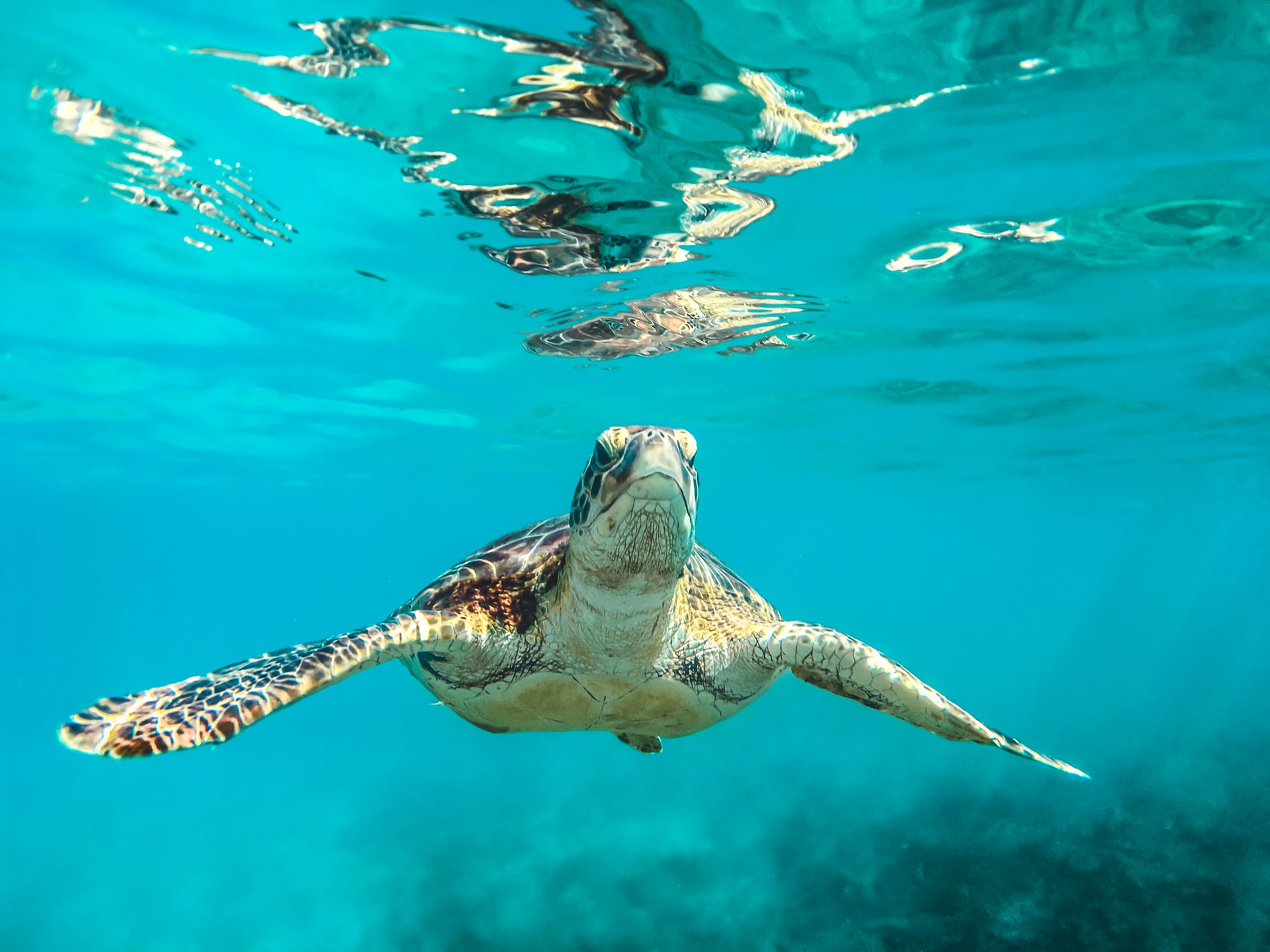How You Can Help Protect Sea Turtles

Sea turtles are one of the most amazing and unique creatures in the world. They have been around for over 110 million years and play a critical role in maintaining healthy oceans. They assist in conserving healthy seagrass beds and coral reefs, control sponge growth, manage the amount of jellyfish in the ocean, and transport important nutrients to other marine life.
Sadly, sea turtles are over-exploited and often killed for their eggs, meat, skin, or shells. Sea turtles have suffered at the hands of poachers for far too long and now nearly all species of sea turtle are classified as endangered. Of the seven total species of sea turtles, three of them are considered critically endangered.
The good news is that all seven sea turtle species are protected in the United States under the Endangered Species Act (ESA), which makes it illegal to hunt sea turtles. Although these rules are important, there are a variety of steps that you can take to further help protect sea turtle populations and support these beautiful reptiles.
Reduce Marine Debris
Most of the trash found in our oceans is plastic debris. This marine debris is causing immense harm to the environment and to our health. This problem will only continue unless we change our consumption habits and ensure that we are properly disposing of our waste.

Together, we can prevent litter from ending up in our oceans. The ideal solution is to prevent plastic debris from entering our oceans in the first place. This can, in part, be achieved through making simple substitutes for wasteful items.
Bring a reusable shopping bag with you to the grocery store, invest in a reusable water bottle, and participate in beach cleanups whenever possible. Click here to learn more about how to become a better ocean steward!
Keep Nesting Beaches Dark
Nesting turtles require a quiet, dark beach in order to thrive. Unfornaturely, baby sea turtles have to deal with all kinds of artificial light. Tourists, businesses, houses, and hotels near the beach can all pose possible threats to hatchlings.
Bright lights discourage turtles from nesting and if they cannot find a proper spot to nest, they will resort to nesting in suboptimal conditions. Sometimes even depositing eggs in the ocean. As a result, the survival outlook for the hatchlings becomes diminished.
The first step in reducing light pollution is to limit the amount of artificial light visible from nesting beaches. Many communities have passed ordinances that require residents to turn off beachfront lights during turtle nesting season. If you live in a coastal area, consider applying window tint or closing your blinds after dark.

Another idea is to invest in sea turtle friendly light fixtures and bulbs. Here you can find examples of sea turtle safe beachfront lighting options. The general rule is to find light fixtures that are low to the ground, shielded, and directed downward. As far as bulbs go, long-wavelength light is ideal. Long-wavelength light usually appears yellow or red in color.
Ensure A Safe Nesting and Hatching Environment
Along with light pollution, unfilled holes on the beach can negatively impact sea turtle nests. Sea turtle nesting season runs every year from around March 1st to October 31st. In order to make the beach a safer nesting and hatching environment, avoid digging holes in the sand around this time of year as you could accidentally uncover a sea turtle nest!
These holes in the sand can also trap hatchlings who are making their way towards the ocean. Consequently, if you do decide to dig around in the sand, be sure to fill up any holes before leaving the beach.

Support Sea Turtle Conservation Efforts
There are dozens of organizations around the world dedicated to protecting sea turtle populations. For example, Sea Turtle Conservancy, a non-profit organization based in Gainesville, Florida is dedicated to protecting sea turtles around the world.
Sea Turtle Conservancy works to raise awareness and protect sea turtles through conservation efforts, research, and education. They offer a variety of programs and ways to get involved, including their adopt-a-turtle program.
As you can see, there are a number of actions you can take to help protect sea turtle populations. With that being said, no one person can save sea turtles on their own. It is essential that we work together to ensure sea turtles continue to survive and thrive for years to come!


Leave a Reply